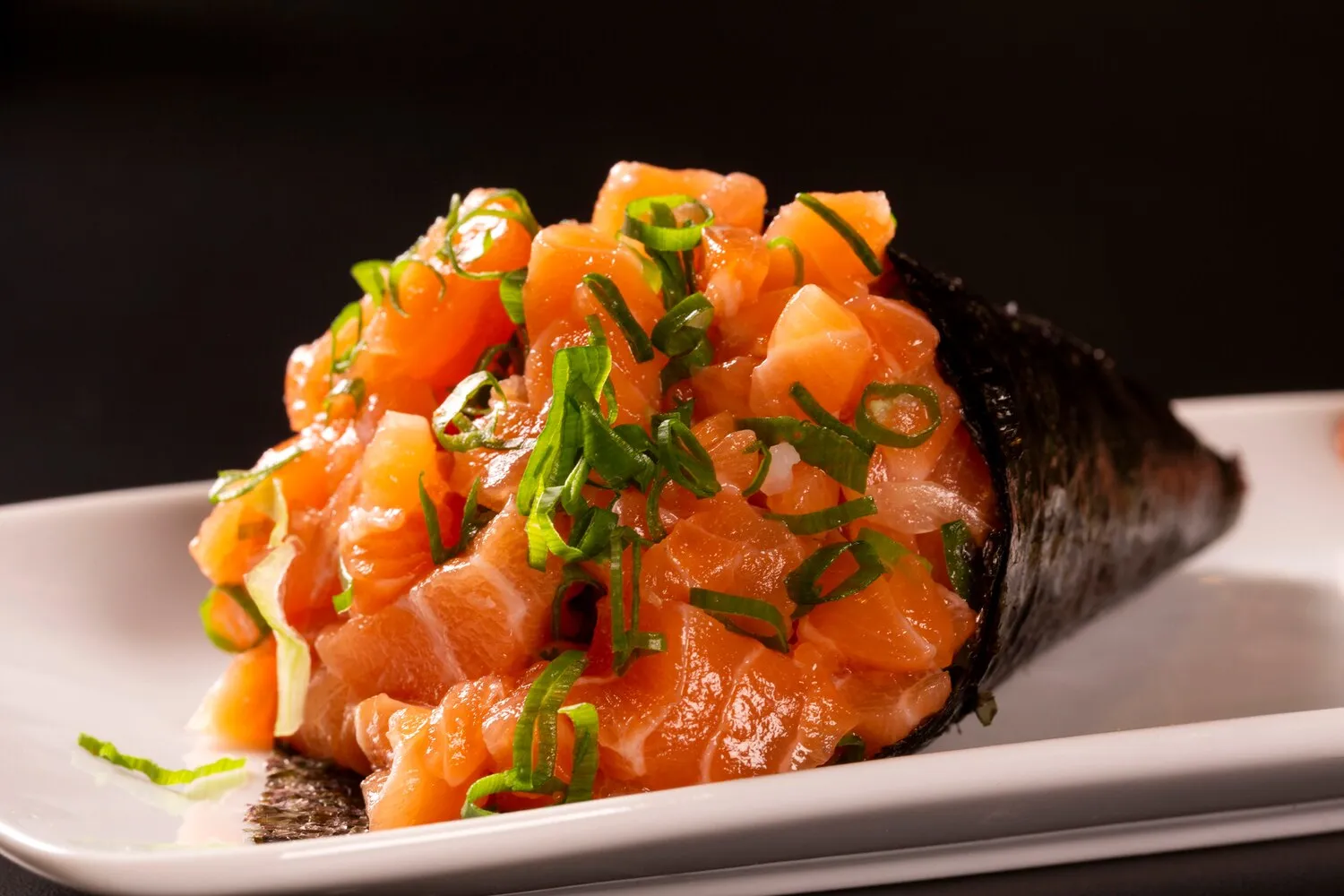
Temaki
Hand-rolled sushi cone filled with rice, seaweed and various fillings such as salmon, tuna or vegetables.
Nutrition Facts
* The % Daily Value (DV) tells you how much a nutrient in a serving of food contributes to a daily diet. 2,000 calories a day is used for general nutrition advice.
Temaki's history is tied to the informal nature of sushi consumption. It evolved from quick, convenient ways for sushi chefs to enjoy their own creations and serve customers in a more casual setting, diverging from the formal and precise nigiri or maki sushi.
Temaki is often enjoyed in social settings, emphasizing its role as a fun, interactive, and customizable dining experience. It’s far less formal than traditional sushi, encouraging guests to assemble their own cones and experiment with different fillings.
DIY Dining
Temaki is a participatory food. The act of hand-rolling your own sushi cone adds to the experience, making it a fun and interactive meal.
Informal Gatherings
It is commonly served at home parties or casual restaurants, promoting a relaxed and social atmosphere. Sharing ingredients and rolling sushi together encourages conversation and bonding.
Customization and Choice
The variety of fillings available allows individuals to create their own personalized temaki based on their preferences and dietary needs. This adaptability makes it a crowd-pleasing dish.
Temaki offers a dynamic interplay of fresh, savory, and umami flavors. The crisp seaweed provides a slightly salty base, while the sushi rice offers a subtly sweet and tangy counterpoint. The fillings bring a burst of fresh seafood, creamy richness, or crisp vegetal notes, creating a well-balanced and satisfying experience.
The flavor profile is heavily dependent on the fillings used. Salmon offers a rich, buttery flavor, while tuna provides a leaner, more savory taste. Vegetables like cucumber and avocado contribute freshness and contrasting textures. Wasabi adds a sharp, pungent kick, and soy sauce provides a salty umami depth. The seasoned sushi rice (vinegar, sugar, salt) balances the other flavors and adds a crucial component.
Seaweed Crispness
Prepare ingredients right before serving to prevent the nori seaweed from absorbing moisture and becoming soggy. Alternatively, lightly toast the nori sheets just before assembly.
Rice Temperature
Use sushi rice that is slightly cooled but still warm. Warm rice is easier to shape and helps to bind the ingredients together.
Ingredient Placement
Avoid overfilling the cone. Place ingredients strategically to ensure even distribution and prevent the cone from tearing or spilling. Start with a base layer of rice, followed by your desired fillings.
Secure the Cone
Firmly press the rice and fillings together to create a cohesive structure. Moisten the inner edge of the nori with a small amount of water to help seal the cone. A single grain of rice can also act as 'glue'.
Explore additional Sushi dishes and restaurants
Explore SushiDiscover top dining spots and culinary experiences in Rio Claro.
Explore Rio ClaroLearn more about the food culture, restaurant scene, and culinary heritage of Brazil.
Explore Brazil